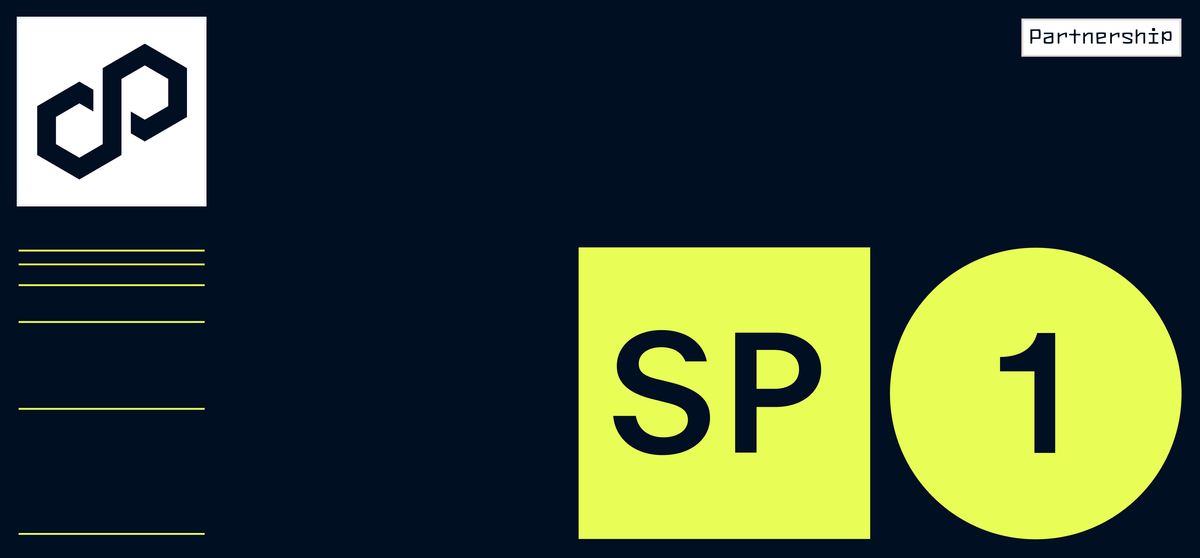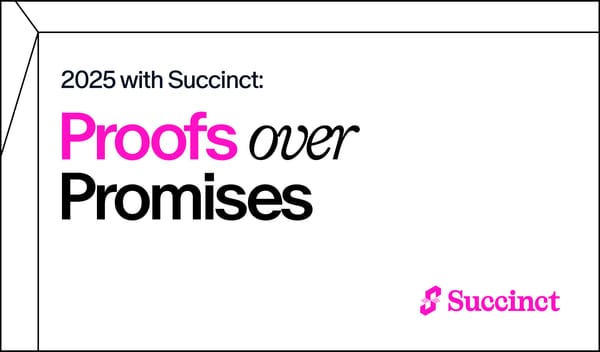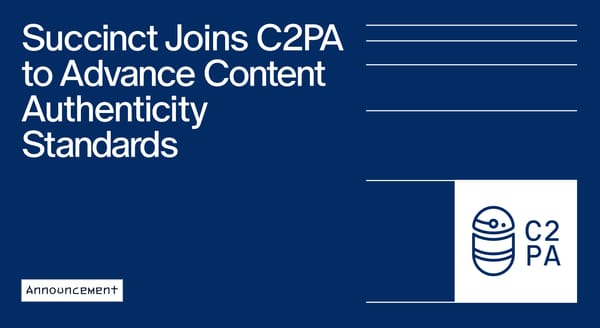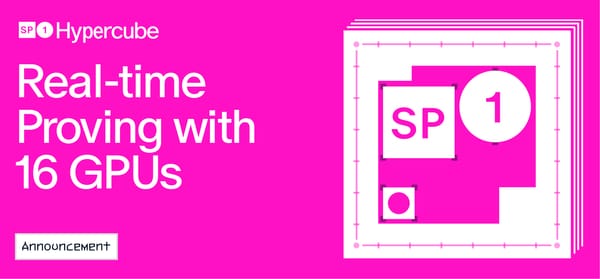Polygon adopts SP1

Polygon Labs partners with Succinct to use the SP1 zkVM for securing the AggLayer
We’re thrilled to announce that Polygon Labs will be using Succinct’s zkVM SP1 for a critical component of the AggLayer: the flagship interoperability protocol that enables unified liquidity across rollups in the Ethereum ecosystem. With SP1, Polygon’s team was able to write the pessimistic proof (the core ZKP for securing the AggLayer) in normal Rust code. SP1’s greatly simplified developer experience and market-leading performance accelerated development timelines for the AggLayer significantly, shortening it from months to a few weeks.
How SP1 enabled Polygon to build AggLayer’s ZKP components in 10x less developer time without sacrificing performance
When Polygon was deciding how best to build the ZKPs required for AggLayer (the “pessimistic proof”), they had several options: building it with one of their existing hand-rolled stack or build it with one of the many available zkVMs. Here’s why they chose SP1:
Developer experience: SP1’s developer experience of simply writing the pessimistic proof program in Rust greatly accelerated development timelines for AggLayer.
- With SP1, two engineers on the Polygon team wrote the pessimistic proof program in < 1000 lines of Rust code over several weeks. With a hand-rolled, circuit-based ZK stack, the same task would have taken several months with a much larger, highly specialized team. (Check out the pressismistic proof implementation here.)
- By using normal Rust code, the pessimistic proof program can reuse existing Rust crates, improving maintainability and auditability by making it easy to understand the ZKP logic for regular engineers; normal Rust also makes it easy to modify the pessimistic proof program to allow additional chains, with different consensus mechanisms, to integrate with the AggLayer.
Market Leading Performance: The AggLayer requires proofs be generated frequently with low cost and low latency to ensure that interoperability among connected chains is as cheap and frequent as possible. Enabled by its precompile-centric architecture, SP1’s state of the art performance reduces cycle count significantly for blockchain programs like computing a rollup state transition function, verifying a proof of consensus or verifying many Merkle proofs.
- The pessimistic proof program, in particular, requires verifying a lot of Merkle proofs with the keccak hash function. SP1’s keccak precompile ensures that its performance is an order of magnitude faster than other zkVMs for programs with significant hashing, making it an obvious choice to use for AggLayer.
- SP1’s blazing fast performance makes it practical to use a zkVM to generate the pessimistic proof in production, where cost and latency matter most.\
Open-Source: SP1 is the only zkVM where the constraints are 100% open-source. This is required for auditability and security, to ensure that the RISC-V ISA is being proven as claimed.
- Allowing anyone to verify that the RISC-V ISA is correctly proven is critical for security in a blockchain context.
We are excited that an industry-leading ZK team saw the clear value in a zkVM based approach and decided to partner with Succinct. We expect more teams across rollups, interoperability, bridging and more to follow in their footsteps as we work toward the zkVM endgame.
How SP1 helps secure unified liquidity and trustless interoperability for AggLayer
Recently, there has been a lot of discussion about how fragmented rollup ecosystems need seamless interoperability for better UX and greater capital efficiency. AggLayer is building this vision and ZKPs are key to enabling low latency, security and permissionless participation of any rollup ecosystem.
- Fast Finality: ZKPs are the only practical way to achieve fast finality for rollups connected to the AggLayer. ZKPs remove the long challenge period needed with an optimistically-designed rollup, reducing the latency (without third-party bridges) from 7 days to < 30 minutes. (The AggLayer can also theoretically support interoperability that is faster than Ethereum finality.)
- Security: ZKPs enable interoperability protocols to have fast finality without relying on trust assumptions. Trustless bridging is critically important in a world where insecure bridges have been responsible for billions of dollars of losses. By verifying a ZKP of a rollup’s state and also that cross-chain transactions between all rollups are properly accounted for, the pessimistic proof enables no additional trust assumptions for interoperability.
- Permissionless Participation of Any Ecosystem: Because SP1 is easily programmable, it can be used to verify rollup state transition functions, as well as verify proofs of consensus for other chains that are not ZK rollups. Other interoperability solutions require that all participating chains use the same stack to interoperate. With the AggLayer, any stack (including OP stack chains, Polygon CDK chains, even Tendermint-based chains etc.) can participate as long as an SP1 program can be written—in normal Rust—to verify their state transition.
SP1 x Plonky3: the power of positive-sum, open-source collaboration
Polygon Plonky3 is a modular proof system library built by the Polygon Zero team for ZK applications and zkVM developers. For building SP1, Succinct chose Polygon Plonky3 for its modularity, performance, and permissive open-source license.
Polygon Plonky3 let us configure the proving system for the particular zkVM we were trying to build, which allowed SP1 to use Plonky3’s FRI implementation over the BabyBear field. This modularity doesn’t come at the expense of performance; the Plonky3 library includes many different optimizations in assembly, including Neon and AVX-512.
The collaboration between Succinct and the Polygon Zero team has been extremely fruitful, with both teams contributing back to each other’s respective code bases. We are grateful to work with such talented partners!
Follow Along
Over the next few weeks, Succinct will be finalizing audits for SP1 and making it ready for production usage on mainnet. At the same time, Polygon will continue working on the AggLayer protocol and get it ready for its mainnet launch, expected in the coming months. We look forward to continued collaboration with the excellent Polygon team and keep on pushing the frontier of ZKPs to improve the Ethereum ecosystem.





